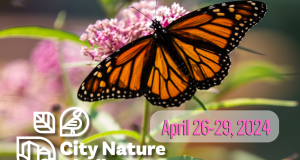When a group of fourth-year medical students at NOSM University learned these statistics, they felt compelled to educate preteens and teenagers ages 12-18 as part of their unique advocacy curriculum.
“Our goal with this project was to create a captivating, information-packed video to educate youth about cannabis and share harm reduction strategies using reliable resources from the Canadian Paediatric Society (CPS) and the Government of Canada,” says Kelsey Pitre, fourth-year NOSM University medical student. “We are hoping that our video answers questions that kids may have about cannabis, and facilitates open discussions. Ultimately, if youth still opt to use cannabis, I hope this video will provide them with strategies to use it more safely.”
Brittany Pennock, fellow classmate and group member says the rising rates of use is what motivated them to do something to help. “I was really surprised at the prevalence of cannabis use in youth and adolescents documented in the literature. It was much higher than I had anticipated,” she says. “Learning this is what moved us to increase the resources available to educate youth and facilitate those difficult discussions around substance use.”
Research states that the increased use of cannabis is even more prevalent in Indigenous youth living on reserve and is also linked to several challenges, including “lower SES (Socio-Economic Status), poorer mental health and poorer relationships with school,” according to the a systematic review Non-medical cannabis use among Indigenous Canadians, published in 2021 by the International Journal of Drug Policy. According to the research, other factors associated with cannabis use include poorer social and family supports, and exposure to intergenerational trauma.
Jeni Glassford, another member of the group says, “This video delivers ‘heavy’ information about cannabis use in an easily digestible manner for youth and teens. I think there is a need for more youth-friendly content like this. It isn’t just a laundry list of ill effects of cannabis use, the video acknowledges that some youth may still decide to use cannabis despite the risks. We drew attention to this and dedicated the video to harm reduction strategies.”
The team acknowledges Dr. Tara Baron, NOSM University Paediatrics Residency Program Director and Associate Professor, and Pediatrician at NEO Kids in Sudbury, who supervised this project and served as an incredible source of guidance and support.
The group of students contacted regional district health units, regional harm reduction programs and the Canadian Paediatrics Society in a wider effort to spread the word. The project was awarded the Paediatric Resident Advocacy Education Grant by Healthy Generations.
“Living and training in the North, you learn that meaningful change begins with intent and is driven by people who have a common goal,” says Alannah MacLean, medical student and group member. “We knew that reaching out to the greater Northern Ontario community would help get this video to youth who will benefit most from learning more about cannabis and harm reduction strategies.”
Pitre adds, “Our years at NOSM have taught us to advocate for patients both at the bedside and beyond. We’ve learned to identify health disparities and find unique ways to try to address them in partnership with communities, and it has been an incredible learning experience.”
“Above all, I hope that youth will feel more comfortable talking to their doctor, or another trusted health-care professional about cannabis use so they can get the reliable information and the support they need,” says Pennock. “We all play a role in combating misinformation.”
- Get Ready for the 2024 City Nature Challenge! - April 18, 2024
- Tickets On Sale for Thunder Bay LitFest 2024 – Featuring Guy Gavriel Kay! - April 16, 2024
- Embark on an Adventure: Win a Fly-In Fishing Trip for Two - April 16, 2024
 Wawa-news.com You can't hear the 'big picture'!
Wawa-news.com You can't hear the 'big picture'!


